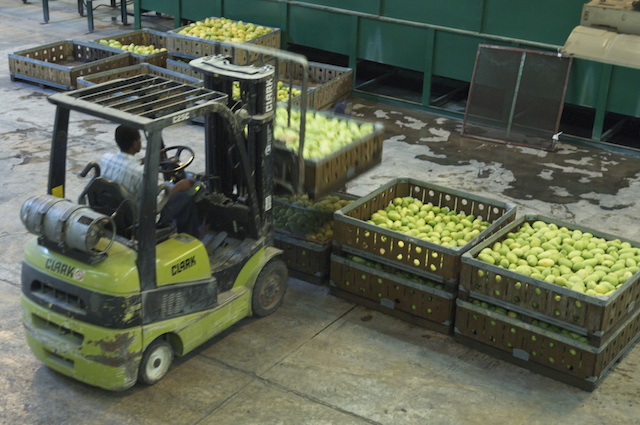- The main principle in international trade is that governments should impose the least amount of barriers to the entry of products
- The International Plant Protection Convention is the framework that determines valid phytosanitary barriers to international trade
FOOD
What is the International Plant Protection Convention?
Governments can prevent the entry of fruits and vegetables into their territory insofar the measures applied are in line with the International Plant Protection Convention (IPPC).

HIGHLIGHTS
If you are a small or medium-sized fruit or vegetable exporter you should know that sometimes governments decide to prevent the entry of certain food products into their territory based on health protection measures. They do so by arguing, for example, that the oranges or tomatoes were grown in certain areas that could spread plague.
Can they legitimately do this? The general principle in international trade, at least among the member States of the World Trade Organization (WTO), is that governments must impose the least amount of barriers to the entry of products into their territories. However, international treaties recognize certain valid reasons for establishing barriers on trade, and plant protection is certainly one of them.
Nevertheless, governments cannot simply impose the first phytosanitary measures that come into mind. According to one of the WTO agreements “to harmonize sanitary and phytosanitary measures on as wide a basis as possible, Members shall base their sanitary or phytosanitary measures on international standards, guidelines or recommendations.” In other words, in order for a State to adopt a phytosanitary decision, international consensus as to the need of the measure is required, and it must have the support of international organization experts operating within this framework.
This is where the International Plant Protection Convention (IPPC) comes into play as the most important international standard on the subject, and it’s Secretariat, as the most important international organization on phytosanitary measures.
What is the IPPC?
The International Plant Protection Convention (IPPC) is a treaty signed under the auspices of the Food and Agriculture Organization of the United Nations (FAO).
The WTO website states that the IPPC “makes provision for the application of measures by governments to protect their plant resources from harmful pests (phytosanitary measures), which may be introduced through international trade.” In brief, the IPPC is the framework that determines the valid phytosanitary barriers to international trade.
The IPPC makes provision for the application of measures by governments to protect their plant resources from harmful pests
The Convention creates two bodies (the Secretariat and the Phytosanitary Measures Commission), which, through complex procedures, are in charge of setting the International Standards for Phytosanitary Measures (ISPM): more specific standards that constitute the true phytosanitary standards that States must follow.
Robert Griffin, from the International Plant Production and Protection Division of FAO, explains that actually the ISPM “are not legally binding. However, the measures are based on international standards that do not require supporting justification by members of the WTO.” In other words, barriers to trade based on ISPM are valid and WTO Member States do not have to provide any explanation in this regard.
However, continues Griffin, “Measures that deviate from international standards or measures that exist in the absence of international standards must be based on scientific principles and evidence. Emergency (or provisional) measures may be taken without such analyses, but must be reviewed for their scientific justification and modified accordingly to be legitimately maintained.”
The IPPC has approved standards in connection with “Guidelines for pest risk analysis”, “Export Certification Systems”, “Determination of pest status in an area” and “Guidelines for the establishment of pest free places of production and pest free production sites”, among others.
A case study
In 1997, the United States submitted a claim before the WTO arguing that the phytosanitary measures applied by Japan restricting the entry of foreign apples were excessive.
Two subject-matter experts, Terence Stewart and David Johanson, explained in a legal magazine article that “the United States alleged that Japan had prohibited the importation of individual varieties of certain agricultural products until each variety had been tested through the required quarantine treatment. For instance, instead of requiring that apples imported from the United States meet the quarantine requirements of Japan with respect to the plague known as ‘fire blight’, Japan decided that all apple varieties should be tested before they could be imported.
Hence, although Japan had approved imports of certain ‘Red Delicious’ apples because the United States had proved that this variety had been treated effectively against the pest, the United States was banned from exporting other varieties, such as ‘Fuji” or ‘Braeburn’”.
Both governments based their allegations on International Plant Protection Convention standards: according to Japan, their risk assessment measures were in line with IPPC rules; but for the United States they were not.
The WTO dispute settlement panel that resolved the case also considered the situation in light of the International Standards for Phytosanitary Measures, and finally decided that Japan’s reasons were not based on sufficient scientific evidence and that they were excessively trade- restrictive.
BIBLIOGRAPHY
- Griffin, Robert. Introduction to the International Plant Protection Convention (IPPC). FAO Document.
- World Trade Organization website: The WTO and the International Plant Protection Convention (IPPC).
- Stewart, Terence and Johanson, David. The SPS Agreement of the World Trade Organization and International Organizations: The Roles of the Codex Alimentarius Commission, the International Plant Protection Convention, and the International Office of Epizootics. In Syracuse Journal of International Law and Commerce, 1999, Vol. 26, pages 27-53.


Follow Us